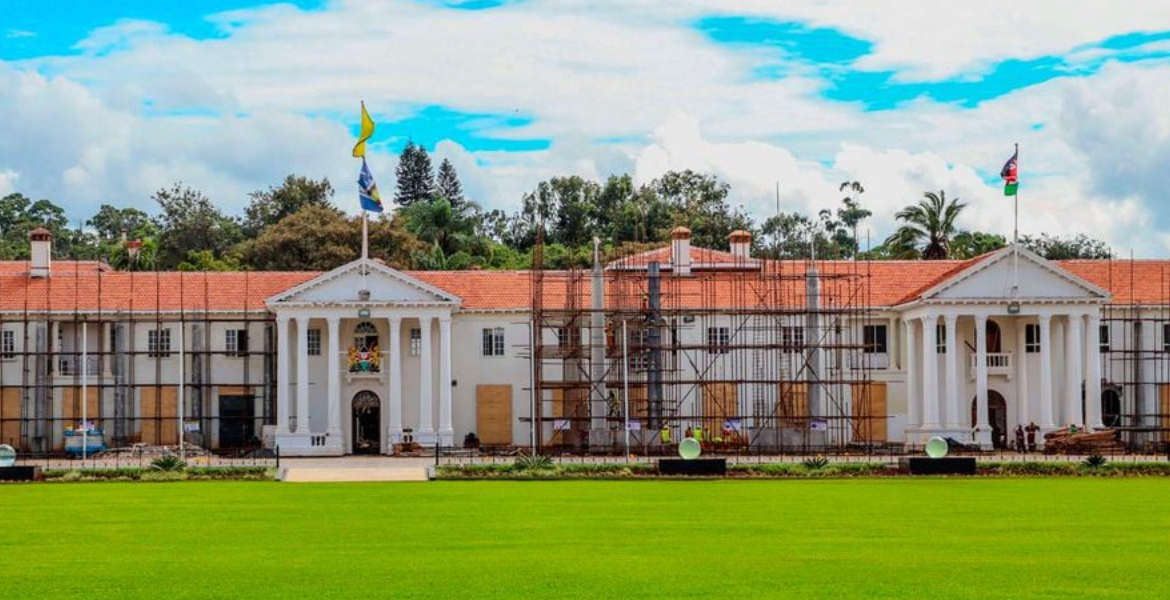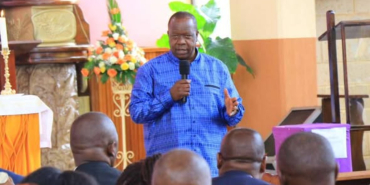Sh2.3 Billion Allocated for State House and Presidential Office Upgrades

In a move that has ignited public debate, Kenya's Executive Office of the President and State House are slated to receive substantial budgetary allocations for renovations and refurbishment in the upcoming 2025/26 fiscal year.
The expenditure, revealed in a recent National Treasury breakdown, stands in contrast to the government’s stated commitment to fiscal austerity and the reduction of non-essential spending. Despite calls for belt-tightening, the State House Nairobi and its associated lodges across the country are positioned to expend a significant portion of a Sh2.3 billion allocation on a comprehensive program of upgrades and maintenance. Specifically, Sh894.9 million has been earmarked for rehabilitation efforts at State House Nairobi and other official residences.
Concurrently, the Office of the President is set to experience a dramatic expansion in its development budget, skyrocketing nearly 300-fold from the current financial year’s Sh50 million to a proposed Sh1.46 billion. This substantial funding surge, which encompasses renovation projects at Harambee House and the refurbishment of the Government Press, appears to contradict earlier assurances from the Kenya Kwanza administration of disciplined fiscal management in the wake of revenue shortfalls and reduced external funding.
The financial commitment to the presidential estate comes at a time when the government faces mounting pressure to adopt a leaner budget. Initial Treasury projections had placed government spending at Sh4.3 trillion. However, the Cabinet recently indicated that significant revisions would be necessary to align with lower revenue expectations. The government’s stated objective is to reduce the fiscal deficit to 2.7 percent while simultaneously avoiding further tax increases, necessitating deep expenditure cuts across various sectors. This backdrop makes the augmented allocation for State House renovations particularly conspicuous.
The latest budget allocation follows a previously controversial refurbishment of State House Nairobi, which involved significant alterations to its colonial architectural design. The makeover, including modifications to the roofing structure, elicited mixed reactions from the public and professional bodies, including the Architectural Association of Kenya (AAK). Prior to the current allocation, funding responsibility for State House renovations had been shifted to the National Intelligence Service (NIS) and the Ministry of Defence.
In a previous budget cycle, the National Treasury initially set aside Sh1.5 billion for refurbishment works before withdrawing financial support due to public criticism and fiscal constraints. This rollback occurred amid mounting frustration over perceived excessive government spending, particularly in the wake of widespread youth-led protests that compelled the administration to abandon proposed tax increases under the Finance Bill 2024.
Despite earlier reassurances, the National Treasury has reinstated Sh894.9 million for further facelift projects, with Sh680.7 million specifically designated for general maintenance at State House Nairobi. A detailed analysis of the budget reveals additional allocations for the upkeep of regional State House lodges, including:
* Eldoret State Lodge: Sh60.1 million
* State House Sagana: Sh15 million
* Mombasa State House: Sh42.5 million
* Nakuru State House: Sh25 million
* Kisumu State Lodge: Sh24 million
* Kakamega State Lodge: Sh25 million
* Mechanical Garage: Sh10 million
* Kisii State Lodge: Sh12.5 million
Government officials have defended these renovations as necessary, citing the structural deterioration of many of these buildings. State House Comptroller Katoo Ole Metito says that parts of the main State House had become unfit for habitation before renovation efforts commenced in late 2022. Architectural experts had advised that a complete reconstruction of State House Nairobi might be required, but government officials opted for renovations as a more cost-effective alternative. The National Treasury has justified the renewed expenditure by stating that the renovations are essential in supporting the President’s constitutional mandate.
In its budget statement, the Treasury asserted that State House facilitates government initiatives, strategic communications, and policy advisory services, thus justifying the need for infrastructure upkeep. The statement further emphasized the role of State House in administering statutory benefits for retired senior officials, including former Presidents and Vice Presidents. Furthermore, the development budget for the Office of the President includes funding for other programs, such as the Kenya-EU partnership on National Strategy to Counter Terrorism, which has received Sh185 million, and the Directorate of Resource Survey and Remote Sensing, allocated Sh69 million.
Members of Parliament have questioned whether upgrading the President’s residences should take precedence over essential services and welfare programs. Kisumu West MP Rozaah Buyu expresses dissatisfaction with the budget priorities, stating, “We are spending too much beautifying the State House. If Kenyans are suffering because of budget cuts, the State House should take the lead in tightening the belt.” Such sentiments reflect frustrations among citizens grappling with economic challenges, including rising taxes and cuts to social programs.
Beyond fiscal considerations, recent renovations to State House Nairobi have drawn criticism for altering its original colonial-era design. The transformation has sparked debate among architectural experts and conservationists who argue that Kenya’s political landmarks should retain their historical identity. The Architectural Association of Kenya (AAK) has voiced concerns over the modifications, particularly the shift to a flat-roof structure, which many claim diminishes the building’s heritage value.
Ole Metito has dismissed these concerns, insisting that the core architectural elements remain intact. “People are seeing the renovations from afar. If you go inside the building, we haven’t lost the historical and architectural designs. The roof is not flat. The building is not yet complete,” he stated.








Add new comment